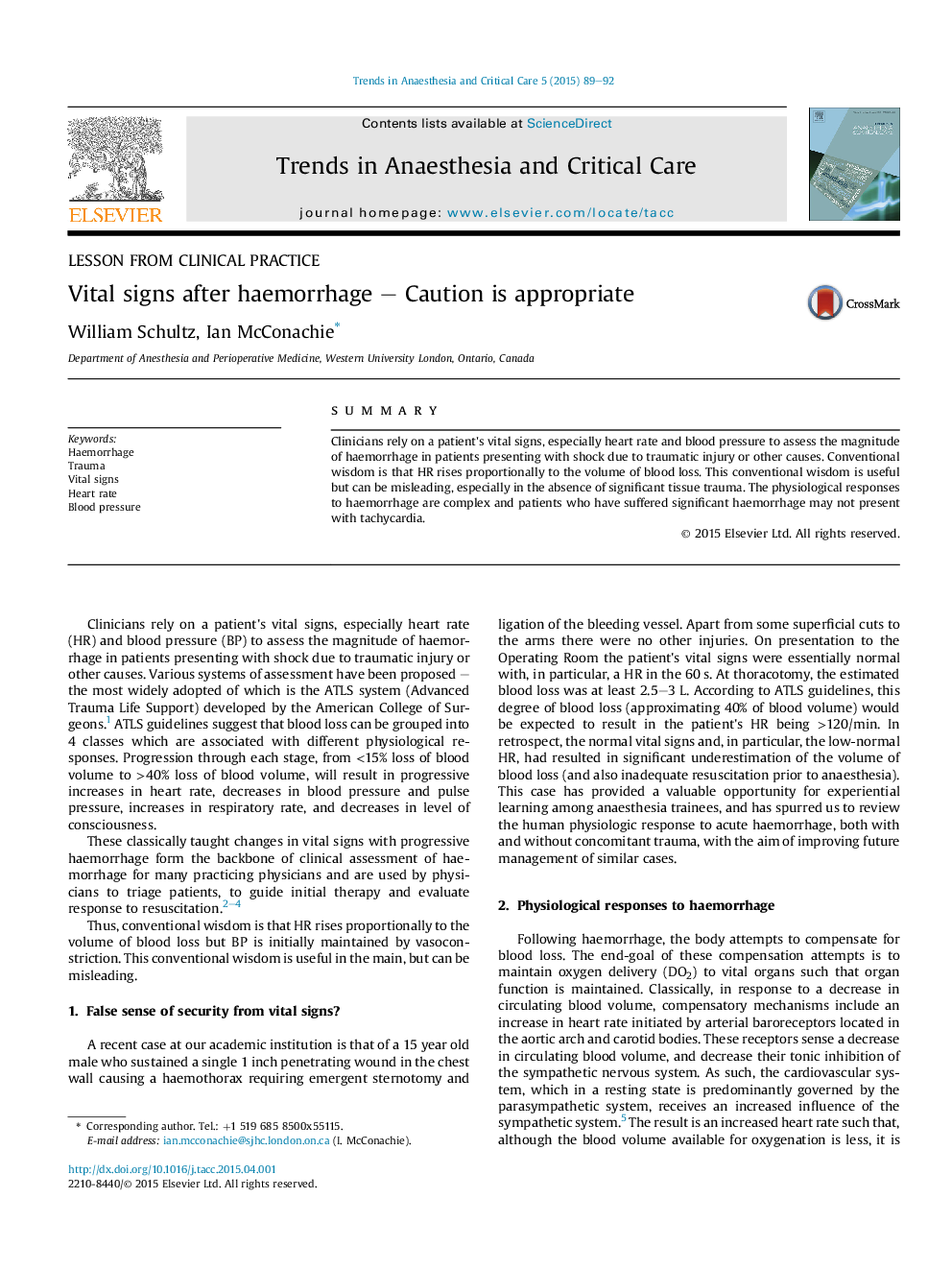| Article ID | Journal | Published Year | Pages | File Type |
|---|---|---|---|---|
| 2772548 | Trends in Anaesthesia and Critical Care | 2015 | 4 Pages |
•Classically, haemorrhage is said to be accompanied by progressive tachycardia.•As blood loss progresses parasympathetic responses slow the heart and can cause bradycardia.•The responses to haemorrhage are different in the presence or absence of tissue injury.•The shock index may be a sensitive guide to the degree of blood loss.
SummaryClinicians rely on a patient's vital signs, especially heart rate and blood pressure to assess the magnitude of haemorrhage in patients presenting with shock due to traumatic injury or other causes. Conventional wisdom is that HR rises proportionally to the volume of blood loss. This conventional wisdom is useful but can be misleading, especially in the absence of significant tissue trauma. The physiological responses to haemorrhage are complex and patients who have suffered significant haemorrhage may not present with tachycardia.
